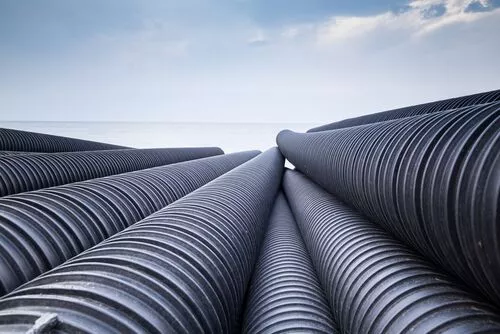In today’s environmentally conscious world, creating sustainable drainage solutions is more important than ever. Proper drainage systems prevent flooding, protect property, and conserve water resources. To achieve a sustainable drainage solution, it is crucial to work with a reliable pipe supplier. In this article, we will discuss how to create a sustainable drainage solution and the benefits of partnering with the right pipe supplier, such as Drainage Pipe Supplier LESSO.
Understanding Sustainable Drainage Systems (SuDS)
Sustainable Drainage Systems (SuDS) are designed to manage surface water runoff in a way that mimics natural processes, reducing the risk of flooding and pollution while promoting biodiversity and water conservation. SuDS are comprised of various components, including permeable surfaces, swales, detention basins, and infiltration systems. By implementing SuDS, you can create an efficient and eco-friendly drainage solution for your property.
Selecting the Right Pipes for Your Drainage System
Choosing the appropriate pipes for your drainage system is essential for ensuring its sustainability and effectiveness. Here are some factors to consider when selecting pipes:
- Material: Different pipe materials offer varying levels of durability, strength, and environmental impact. Some popular options include PVC, HDPE, and concrete. Drainage Pipe Supplier LESSO provides a wide range of high-quality pipe materials suitable for various applications.
- Size: Pipe size should be based on the volume of water your drainage system needs to handle. It is crucial to accurately calculate your system’s requirements to ensure efficient water flow and prevent blockages or overflows.
- Compatibility: Ensure that the pipes you choose are compatible with the other components of your SuDS, such as grates, catch basins, and fittings.
- Environmental Impact: Opt for pipes made from materials with low environmental impact and a long service life to minimize waste and reduce your carbon footprint.
Partnering with a Reliable Pipe Supplier
Working with a trustworthy pipe supplier like Drainage Pipe Supplier LESSO offers several advantages, including:
- Expert Advice: A knowledgeable supplier can provide valuable guidance on selecting the right pipes and fittings for your drainage system, ensuring optimal performance and sustainability.
- Quality Products: By partnering with a reputable supplier, you can be confident that the pipes and components you purchase are of the highest quality, ensuring long-lasting durability and functionality.
- Competitive Pricing: Established suppliers often offer competitive pricing on their products, allowing you to create a sustainable drainage solution without breaking the bank.
- Comprehensive Product Range: A reliable supplier will have an extensive range of pipes and drainage components, enabling you to find the perfect solution for your specific needs.
- After-sales Support: A good supplier will offer after-sales support, ensuring that you have access to assistance and advice even after your purchase.
- Customization Options: Some suppliers, like Drainage Pipe Supplier LESSO, offer customized pipe solutions tailored to your project’s unique requirements, ensuring a perfect fit for your drainage system.
Implementing Your Sustainable Drainage Solution
Once you have selected the right pipes and partnered with a reliable supplier, the next step is to implement your sustainable drainage system. Consider the following factors during installation:
- Proper Grading: Ensure that your property is graded correctly to facilitate efficient water flow away from structures and towards designated drainage areas.
- Regular Maintenance: Regularly inspect and maintain your drainage system to ensure its ongoing functionality and sustainability. This includes clearing debris, checking for damage, and repairing any issues promptly.
- Plant Selection: When designing your SuDS, opt for native plants and vegetation that require minimal irrigation, promoting water conservation and biodiversity.
- Water Harvesting: Incorporate water harvesting elements such as rain barrels and cisterns into your drainage system to capture and reuse rainwater for irrigation or other non-potable purposes, further enhancing its sustainability.
- Permeable Surfaces: Utilize permeable surfaces like permeable pavers and porous concrete for driveways, walkways, and parking areas to promote natural infiltration and reduce runoff.
- Community Involvement: Encourage neighbors and community members to adopt sustainable drainage practices and share your experiences to promote the widespread implementation of SuDS.
Conclusion
Creating a sustainable drainage solution involves understanding the principles of SuDS, selecting the right pipes and components, and partnering with a reliable pipe supplier like Drainage Pipe Supplier LESSO. By considering factors such as pipe material, size, compatibility, and environmental impact, you can ensure that your drainage system is efficient, eco-friendly, and long-lasting.
In addition to providing expert advice, quality products, and competitive pricing, a reputable supplier will offer a comprehensive product range, after-sales support, and customization options to help you create the perfect drainage solution for your property. By implementing proper grading, regular maintenance, plant selection, water harvesting, permeable surfaces, and encouraging community involvement, you can further enhance the sustainability of your drainage system and contribute to a greener future.

